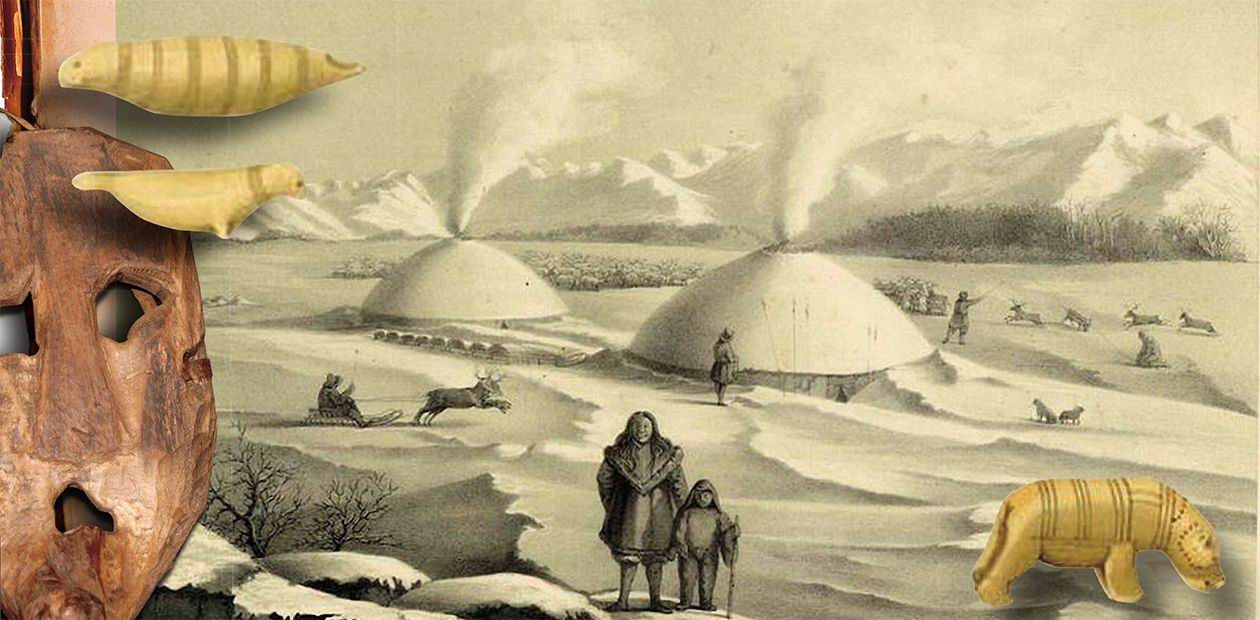“It is hard to handle the Koryaks using firing arms”
on the history of Russian-Koryak relations: defeat of Bolshoi Posad in 1714
Russians began to get to the vast expanse of Siberia on the cusp of the 11th and 12th centuries but a wide-scale invasion started as late as in the end of the 16th c., after the campaign led by the famous Cossack ataman (chieftain) Yermak. Since then, the eastern borders of the Russian czardom pushed relentlessly “towards the sun,” though it took Russia almost three centuries to annex the vast Siberian region, and the enterprise was quite controversial. There is a widespread feeling among general public and even among scholars that the discovery of the new lands in the East automatically led to their incorporation by Russia. It is often overlooked that some groups of local population resisted the Russian colonization for a very long time: for example, the Chukchi, who de jure became Russian subjects in the late 18th c., de facto remained independent until the 1920s. Another example of a relationship complicated from the outset and accompanied with serious armed clashes is that between the Russians and the Koryaks. In order to understand the origins of this “war” between the “sovereign’s people” and aboriginal population, one can turn to the documentary evidence of the epoch. This paper deals with the events that occurred during a most bloody period of the Russian-Koryak relationship and became known thanks to the archival documents and eyewitness accounts collected by Academician G.F. Müller
The Russian service men first contacted the Koryaks as early as in the mid‑17th c., but until the end of that century the Cossack crusades were not successful, and few Koryaks were taxed. The discovery of Kamchatka changed the situation dramatically as the principal pathways to the peninsula went through the Koryak lands. The detachments of service and industrial men streaming to the “new land” quickly turned against them the Penzhina and Alyutor Koryaks, who inhabited the isthmus connecting Kamchatka and the continent. The cruelty and outrages permitted when collecting the yasak (tribute paid off in furs or money), in quartering and exchange transactions provoked resentful backlashes of the aborigines.
The first half of the 18th c. was a chain of sustained military attacks between the Russian service-men and Koryaks, when the devastation of aboriginal fortresses, murders of yasak collectors and industrial men, and assaults on the detachments taking food and arms to Kamchatka and returning with yasak proceeds were common. All too often, before the reports of Anadyr salesmen on the resounding defeat of rebellious Koryak fortresses reached Yakutsk, couriers rushed after them with panic messages of Koryak plunder and the cut-off road to Kamchatka.
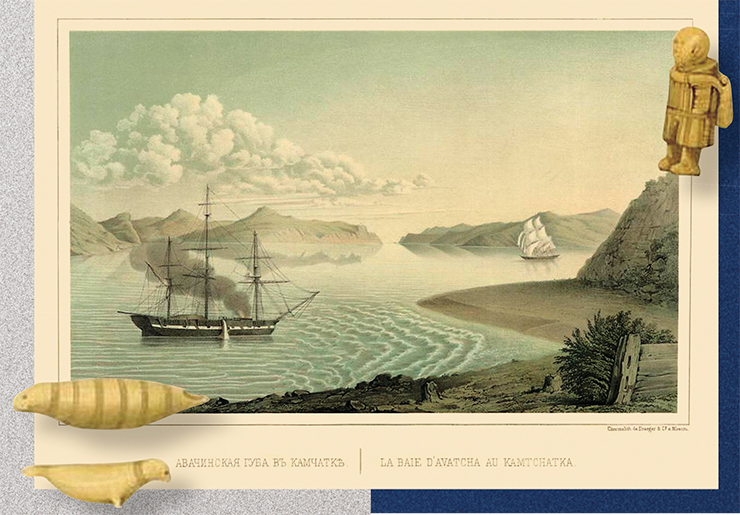
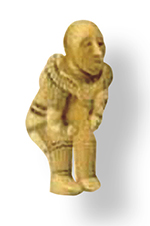 The Koryaks are an indigenous people living in North-East Siberia. The Koryak language belongs to the Chukotka-Kamchatka family of the Paleo-Siberian languages and is most similar to the Chukot language. Traditionally, the Koryaks were divided into two economic-cultural types: the first, nomadic, was represented by groups of reindeer herders migrating across the mainland tundra; the second, sedentary, was typical of the inhabitants of the river lower reaches and seashore, whose main occupations were fishing and hunting sea mammals. Among the sedentary Koryaks, the Alyutors stand apart in terms of their language – many scholars acknowledge their dialect as a separate language.
The Koryaks are an indigenous people living in North-East Siberia. The Koryak language belongs to the Chukotka-Kamchatka family of the Paleo-Siberian languages and is most similar to the Chukot language. Traditionally, the Koryaks were divided into two economic-cultural types: the first, nomadic, was represented by groups of reindeer herders migrating across the mainland tundra; the second, sedentary, was typical of the inhabitants of the river lower reaches and seashore, whose main occupations were fishing and hunting sea mammals. Among the sedentary Koryaks, the Alyutors stand apart in terms of their language – many scholars acknowledge their dialect as a separate language.
Presently, the Koryaks live predominantly in the Koryak autonomous district of the Kamchatka oblast, in the Magadan oblast and in the Chukotka autonomous district. The estimate of their population in the early 18th c. is very approximate: from 7,000 to 13,000. The census taken in 2013 counted 7,953 Koryaks. According to it, only one in five can speak their native language while in 1959 this number was 99.6 %
Sometimes the Koryaks even dared to attack, often with success, the service men detachments armed not only with harquebuses (similar, probably, to the European muskets) but also with cannons. The Koryaks were not intimidated by the firing arms; moreover, they knew how to use the captured weapons. The Cossacks, in their turn, had to adapt to the Koryak methods and means of warfare. The appointed governor of Kamchatka, syn boyarski* Petr Chirikov, whose detachment was intercepted by Alyutor Cossacks on their way from the Anadyr fortress to the peninsula and lost ten men killed and twenty injured, wrote, “To fight the Koryaks, we need skillful warriors wearing plate sewn-on armor and archers; it’s hard to handle the Koryaks just with firing arms because they have learnt how to use fire-pieces, and they fight not like the Russians.”
Note that Chirikov’s detachment included a commander of fifty men, four commanders of ten men, and about fifty regular service men armed with two copper cannons, a hundred cannon balls, about 12 stones of lead and 19 stones of gunpowder, in addition to hand fire-arms. Most of these weapons were captured by the Koryaks.
The Koryaks’ struggle against the Russian service men was courageous, steadfast and desperate. There were many cases when, having been defeated, they set fire to their dwellings and burned themselves together with their families alive to avoid capture. The Koryaks often inflicted sophisticated and brutal torture on the Russian service men who fell into their hands.
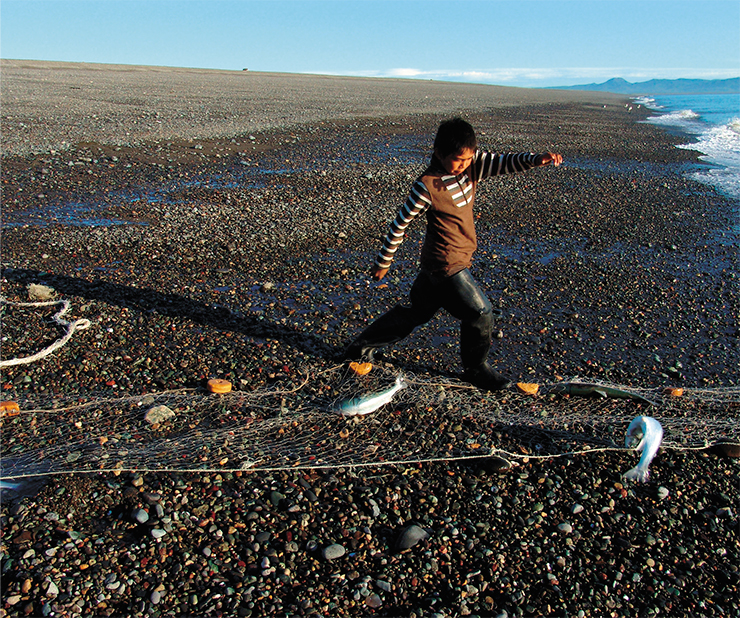
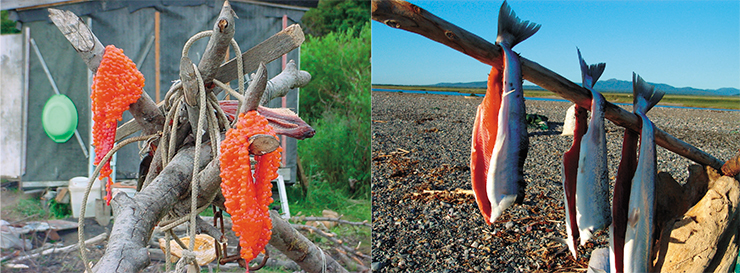
Another unpleasant surprise for the Russian authorities was that the well-tried and efficient for other Siberian peoples practice of taking hostages did not work here. The Koryaks, as well as the Chukchis, refused to submit and pay yasak in exchange for the lives of their relations. The famous explorer of Kamchatka S. P. Krasheninnikov wrote about the Koryaks, “All of them are rough, vicious, adverse, spiteful and merciless people.”
We can suppose that this harsh characteristic primarily reflects the attitude of Kamchatka service men, who informed the scientist on the history of Kamchatka development and on the life and customs of its aborigines. As for the Anadyr and Kamchatka service men, they were not a model for mercy either. Documents dated by the first half of the 18th c. testify that their campaigns against the rebellious Koryaks were often accompanied by ruthless pillage, capture of slaves and sometimes even extermination of the settlements’ inhabitants.
From the horse’s mouth
One of the most dramatic and gory periods in the history of Russian-Koryak relationship was in 1708—1715. The events of that time have become known to historians mainly from the documents of the Yakut Archive copied by Academician Müller.
Müller, head of the Academic Detachment of the Second Kamchatka Expedition, made these copies during his stay in Yakutsk from September 4, 1736 to July 9, 1737 (today, they are kept at the St Petersburg branch of the RAS Archive). The most important of these documents (charters, notes by Anadyr and Kamchatka governors and leaders of war campaigns against the Koryaks, questioning of service men, etc.) depicting the Russian-Koryak relationships in the first quarter of the 18th c. were published as early as in the late 19th c. Müller got familiarized with the content of these sources during his stay in Yakutsk. He was intrigued with the events related to Kamchatka discovery and development, resurrections of the indigenous nationalities, their causes and consequences.
“MY WISH IS TO SERVE SOCIETY” (G. F. Müller)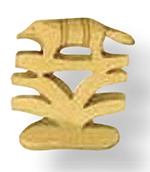 Today, not many history lovers have heard the name of Gerhard Friedrich Müller whereas in the 19th c. some Russian scientists referred to him as the “father of Siberian historiography.” Up to now, virtually every solid study of the history of Siberia in the 16th –18th cc., its ethnography and languages of the Siberian indigenous population contains references to Müller’s works.
Today, not many history lovers have heard the name of Gerhard Friedrich Müller whereas in the 19th c. some Russian scientists referred to him as the “father of Siberian historiography.” Up to now, virtually every solid study of the history of Siberia in the 16th –18th cc., its ethnography and languages of the Siberian indigenous population contains references to Müller’s works.
Born in Herford, Germany, Müller studied philosophy and arts in the universities of Rinteln and Leipzig. Having received his Bachelor’s degree in 1725, he almost immediately set out to Petersburg, where the Imperial Academy of Sciences had been founded. At the age of 25, he received the title of professor. During the 58 years spent in Russia, Müller, who became a Russian citizen, had managed to do so much that a century after his death he was said to be the “most hard-working Russian Academician.” Müller was the founding father of a number of new scientific directions; a lot of his theoretical and practical work was far ahead of his time. A critical milestone of Müller’s life was his travel around Siberia as an informal leader of the Academic Detachment of the Second Kamchatka Expedition of 1733—1743, one of the most grandiose ventures throughout the history of field studies. Müller did not miss a single uyezd (district) in the Urals and Siberia and during the ten years’ journey gathered a wealth of most valuable information on the history, economy, geography, demography, archaeology, ethnography, and languages of the Siberian indigenous population. The source of basic and most valuable ethnographic material were indigenous people. Müller’s Siberian heritage includes dozens of books and articles on the regional history and geography, maps, historical and geographical profiles of the uyezds, travel reports, a diary 2,500 pages long, and works on ethnography. Müller discovered and purchased for the Academy nearly all Siberian chronicles (including the Remezov Chronicle). He had about 10,000 documents on Siberian history copied in the Siberian archives. It is Müller who saved them for the future generations: most of the originals of these documents either burnt or were destroyed in the 18th and 19th cc.
In Yakutsk, Müller learnt that some witnesses of the events that occurred in the beginning of the century were still alive and did his best to get additional information from the horse’s mouth. A real coup for him was acquaintance with syn boyarski Ivan Lvov, who on Müller’s request was urgently brought to the town from remote regions, where he was buying cattle. His intense desire to see Lvov the scientist explained as follows, “syn boyarski from Yakutsk Ivan Lvov… can tell a true story of the events that happened in the Yakutsk uyezd and in Anadyr and Kamchatka lands because he had been sent there many times, … of the military expedition from the Anadyr fortress to Kamchatka with the nobleman Afanasiy Petrov and how he, Petrov, and two Kamchatka governors, Vasily Kolesov and Ivan Yeniseisky, were beaten by the Alyutor Koryaks.”
Among Müller’s expedition materials we discovered a few notes of his talks with Lvov. Two of them are of greatest interest. The first one is a “tale” in Russian, written probably by Lvov himself; the text is preceded by Müller’s table of content in German. The second is an excerpt from the traveller’s diary, also in German. Both sources provide Lvov’s evidence of the campaign waged by the Anadyr service men against the Alyutor Koryaks in 1713—1715. Both focus on the siege and defeat of the Alyutor fortress Bolshoi Posad. The texts of the documents do not coincide and complement each other.
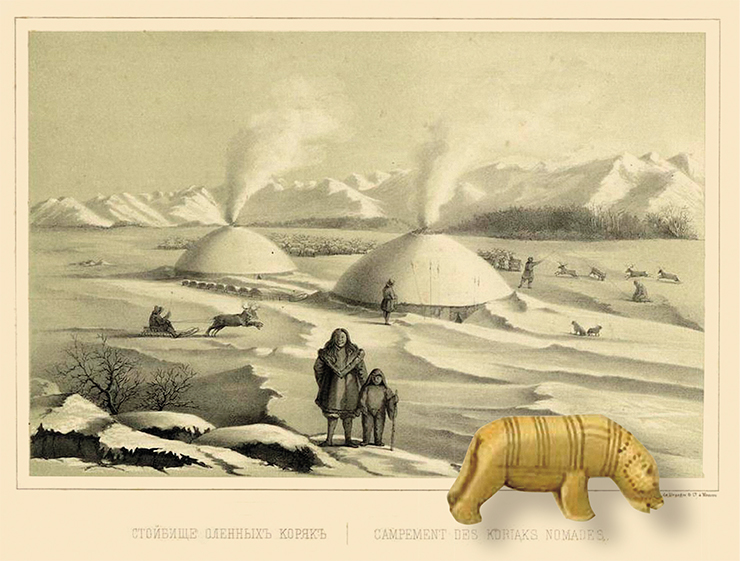
Soon after that, Müller met another participant of the expedition against the Koryaks, a retired service man Vasily Atamanov. Atamanov’s story written down in the German language contains detailed information about two important expeditions, against the Penzhina Koryaks in 1708—1709 and against the Alyutor Koryaks in 1713—1715.
Lvov and Atamanov were well-informed; besides, they played not the least role in the events described. In the course of the military campaigns waged by Anadyr service men, two Russian fortresses were founded. Atamanov was in charge of the construction of the first of them, the Perzhina fortress, and was head of the second one, Alyutor (Archangelsk) fortress. Lvov’s high standing among the participants of the 1713—1715 expedition is demonstrated by the fact that one of the formal replies of the campaign’s leader Petrov is also signed by Lvov. These informants not only specify many details of the expeditions against the Penzhina and Alyutor Koryaks, but supply some data that are truly unique. In particular, they shed a different light on the defeat of the Alyutor fortress Bolshoi Posad by the service men during the campaign of 1713—1715.
The Yakutsk authorities had been planning a wide-scale military expedition against the unruly Alyutor Koryaks long before 1713, but postponed it every time because the garrison of the Anadyr fortress (Anadyrsk), an outpost of Russian power in north-eastern Siberia, was not strong enough. To strengthen the Anadyr service man, in 1708 a detachment led by a commander of fifty men, syn boyarski Efim Petrov was sent from Yakutsk. Petrov became the fortress’s governor. One of the newly arrived service men was Vasily Atamanov.
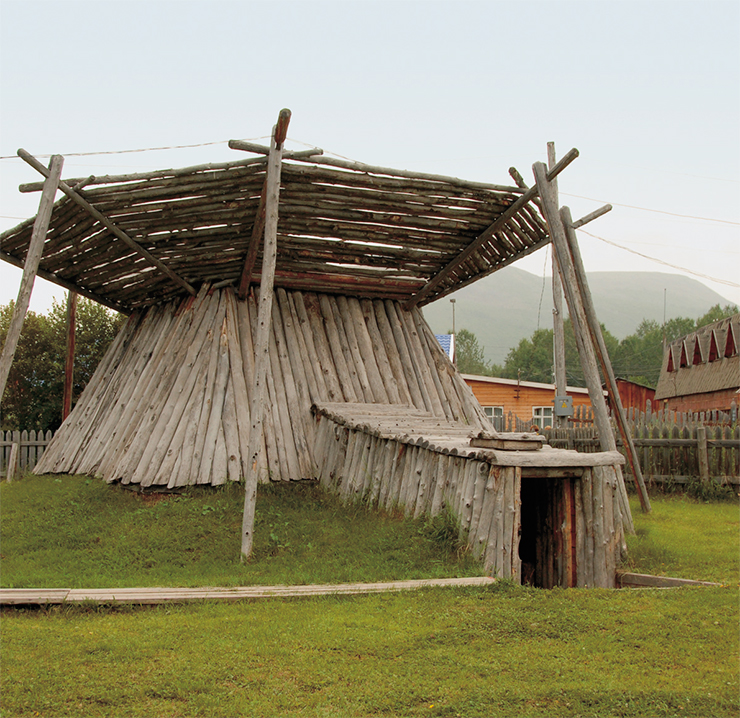
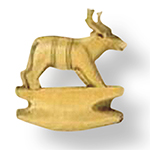 According to the place of residence and way of life, the Koryaks split up into nomads, or reindeer Koryaks, and sedentary, coastal, or “sitting” Koryaks. The former depended on reindeer breeding; the latter lived on hunting, seal catching and fishing. Nomadic Koryaks lived in mobile yarangas, frame structures made up from poles shaped as tripods connected with crossbars. This frame was covered with reindeer skins sewn together, with hair outside. To erect a yaranga, Koryaks dug posts into a round pit up to 1.5 m deep and between them dug logs cleft lengthwise. To the wall facing the sea they built on a covered corridor dug into the ground. The walls, packed with dry grass or moss, roof, and the corridor were all buried under the earth. During the fishing season, the Koryaks entered their shelter through the corridor and in the winter, through the hole in the roof, using a notched log as a ladder
According to the place of residence and way of life, the Koryaks split up into nomads, or reindeer Koryaks, and sedentary, coastal, or “sitting” Koryaks. The former depended on reindeer breeding; the latter lived on hunting, seal catching and fishing. Nomadic Koryaks lived in mobile yarangas, frame structures made up from poles shaped as tripods connected with crossbars. This frame was covered with reindeer skins sewn together, with hair outside. To erect a yaranga, Koryaks dug posts into a round pit up to 1.5 m deep and between them dug logs cleft lengthwise. To the wall facing the sea they built on a covered corridor dug into the ground. The walls, packed with dry grass or moss, roof, and the corridor were all buried under the earth. During the fishing season, the Koryaks entered their shelter through the corridor and in the winter, through the hole in the roof, using a notched log as a ladder
The detachment arrived at Anadyrsk in the late October 1708, and shortly, on the eve of the new year, Petrov led an expedition against the Penzhina Koryaks, who lived on the Penzhina River, neighboring rivers and the seacoast. The cause of the punitive expedition, according to Atamanov, was the murder by the Koryaks from the Chendon fortress of two yasak collectors sent by Petrov – their stomachs were slashed open while they were still alive and their intestines were torn out. The goal of the expedition was revenge and bringing to submission the non-yasak or conventionally yasak Penzhina Koryaks (the latter paid yasak at their own discretion or in the amount they set themselves). In fact, the yasak collectors had been sent out by the previous governor of Anadyrsk, and Petrov learnt about their murder only in 1709. Supposedly, the purpose of the expedition was not just to make the Penzhina Koryaks obedient to the Russian crown but also to build a springboard for launching a more ambitious campaign against the Alyutor Bolshoi Posad.
The communities of the Penzhina Koryaks were mostly sedentary – they had no deer, and their main occupations were fishing and sea mammal hunting if they lived near the coast. Their seven main settlements were referred to as “fortresses” though by no means all of them matched this term. According to Atamanov, only the Aklansky and Chendonsky had some kind of fortifications, namely, logs dug in the ground. The defense works of the Kamenny settlement topping a high cliff was nothing but a stone rampant with an access hole leading inside. The other “fortresses” had no fortifications at all.
“I ordered to take the fortress by force”
The accounts of the 1708—1709 campaign written down by its leader Petrov in his formal replies to Yakutsk and by Atamanov are in a marked contrast.
According to Petrov, the campaign was brutally hard and accompanied by continuous violent clashes with the enemy’s superior force. The service men had to fight against numerous and fierce Koryak warriors and deal with powerful defense structures. Importantly, the expedition had reached all the targets set: the Penzha Koryaks had been completely defeated and suffered heavy losses because of fierce battles. In particular, Petrov reported that the Kamenny and Kosukhin fortresses were taken by assault and “50 unsubdued Koryaks were killed” during the attack. According to him, especially bitter resistance was demonstrated by the defenders of the Chendon fortress: “Seeing their evil nature and unruliness, I ordered to take the fortress by force, and with Almighty God’s help the service men and yasak foreigners ran towards the wall and fought against those thieves for an hour and half.” Allegedly, “over three hundred strong warriors died” during the assault and in the tepees set on fire on Petrov’s command.
The motivation of these victorious accounts is evident: in his replies, Petrov styles himself as a skillful and efficient commander who has solved the thorny for the authorities issue right after his appointment as the governor of Anadyrsk, something that his predecessors had failed to achieve. Recognition of his services by Yakutsk and Moscow opened up good carrier prospects.
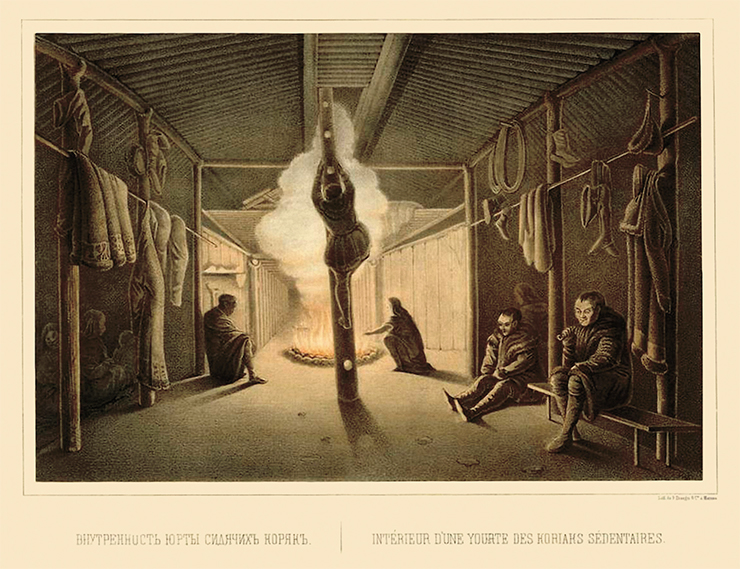
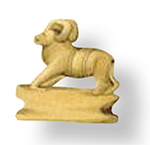 Koryak folk crafts include working with wood, bone, metal, and stone; weaving; and processing hides. In the old times, they also did pottery. From wood, the Koryaks made reindeer and dog sleds, boats, spear and harpoon shafts, shuttles for making nets, etc.; from stone, they made axes and spearheads. Reindeer and argali bones and antlers were used to make home utensils, knifes to split fish, harpoon heads, brakes for reindeer sleds and many other household items. Walrus horn and tusk was the material from which they made cult objects and ornaments: miniature figurines of people and animals, stone earrings, necklaces, tobacco boxes, and engraved smoking pipes
Koryak folk crafts include working with wood, bone, metal, and stone; weaving; and processing hides. In the old times, they also did pottery. From wood, the Koryaks made reindeer and dog sleds, boats, spear and harpoon shafts, shuttles for making nets, etc.; from stone, they made axes and spearheads. Reindeer and argali bones and antlers were used to make home utensils, knifes to split fish, harpoon heads, brakes for reindeer sleds and many other household items. Walrus horn and tusk was the material from which they made cult objects and ornaments: miniature figurines of people and animals, stone earrings, necklaces, tobacco boxes, and engraved smoking pipes
However, a participant of this campaign, Atamanov, tells a different story and refers to Petrov’s replies as “vain bragging.” According to Atamanov, virtually all of the Koryak fortresses were captured by the service men without much effort because as their detachment approached a fortress, all men able to fight fled to the mountains to hide, leaving in the settlements women, children and old people, who were mostly killed (except that some children taken as slaves). Petrov’s attempt to subdue the reindeer Koryaks living near the Yerokhon River, who had conventionally accepted Russian authority and paid an insignificant yasak at their discretion, was unsuccessful. When the service men arrived, the reindeer Koryaks fled to their coastal (sedentary) relations, who had fortified their settlement on a high mountain on the seacoast. Petrov did not dare to attack it and set out back to Anadyrsk.
We cannot claim, of course, that Atamanov’s evidence is unbiased and truthful in all respects. His account might have been influenced by his hostile feelings towards Petrov and understandable desire to emphasize his own merits. Largely, however, Atamanov seems to be right. The truthfulness of his information concerning Petrov’s vain bragging is supported by the formal reply written by the governor of Kamchatka fortresses O. Lipin and sent to the governor of Yakutsk on September 27, 1710: “As for the Kosukhin and Kamenny fortresses near the sea attacked by Efim Petrov, these fortresses have been fortified and many more people have come and settled there, and they did not pay yasak in 709 or 710.”
According to Atamanov, Petrov’s detachment returned to Anadyrsk in the spring 1709, and about the same time, a detachment of service men led by Ivan Beloborodov arrived at Anadyrsk in order to build a Russian fortress on the Penzhina River. By this document, both Petrov and Beloborodov were charged with the construction. However, as Beloborodov was Petrov’s relative, the latter released him from this back-breaking work and instead of himself sent Atamanov.
Atamanov’s team of 40 service men consisted primarily of the people who had come with Beloborodov from Yakutsk; most Anadyrsk service men bought their way out of this work. The fortress built from poplar and asp trees and shaped as a four-cornered fence with four winter quarters inside was completed in the fall of 1709, on an island on the Penzhina River, about 120 verst’s above the Arkan River estuary. Note that it is wrongly assumed that the Penzhina, or Aklan, fortress was erected in 1708 and that it was founded by Petrov. Support for this is the document made up by Petrov in 1710, upon his return to Yakutsk, where he stated that “at the behest of the great sovereign, he, Efim Petrov, built a fortress on the Penzhina River.” Atamanov was not even mentioned.
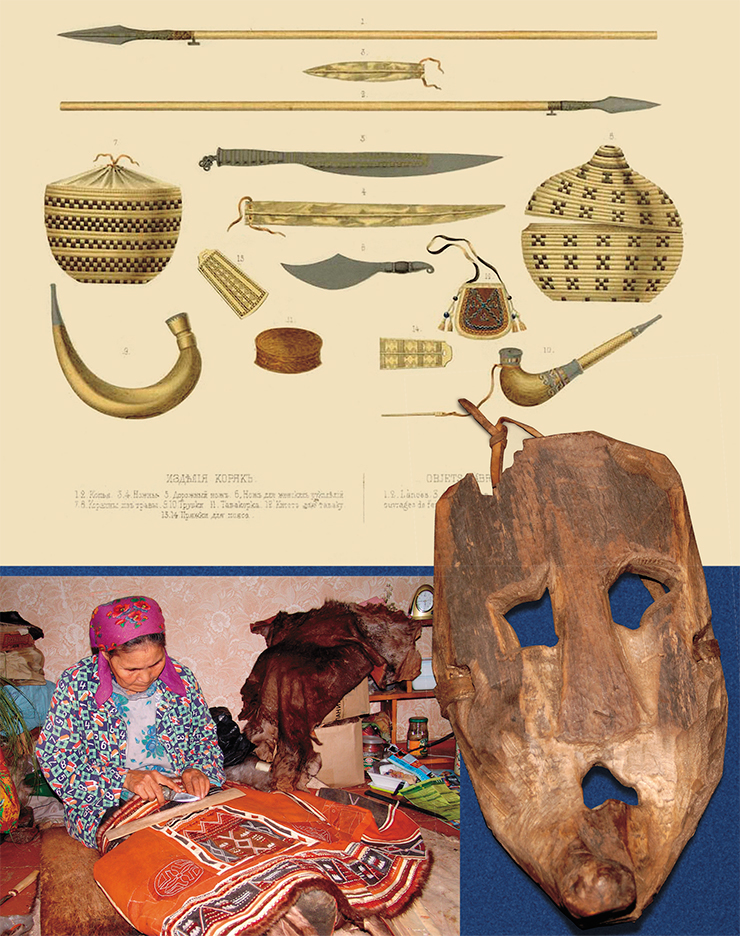
Foundation of the Penzhina fortress, based halfway between Anadyrsk and Alyutor settlements, allowed Russian authorities to start preparations for another major military expedition aimed at the defeat of the Alyutor fortress Bolshoi Posad. Atamanov mentioned that the previous repeated attempts to conquer Bolshoi Posad had failed. Moreover, the defense potential of Alyutor Koryaks had been enhanced owing to the numerous firearms, gunpowder and lead seized from Russians. Eventually, the Anadyrsk manager Petrov received the order dating January 16, 1713 telling him “to make war against Alyutor Bolshoi Posad and Koryak Tymlat rivers, to defeat those foreigners and to fully clear the path to Kamchatka.”
The expedition led by Petrov from Anadyrsk started in December 1713. Apart from Russian service men, numerous allied Yukagirs took part in the campaign. The detachment camped near the Kuzmina River for three weeks waiting for the yasak Koryaks from the Opuka, Pokacha and other rivers to join them, which enhanced the joint task force considerably. The detachment approached Bolshoi Posad on February 20, 1714.
“To make was against Alyutor Bolshoi Posad”
Until recently, the siege and conquest of Alyutor Bolshoi Posad has been described in very general terms, mostly by A. Petrov in his brief replies. It is difficult to judge from them what kind of settlement it was, how many people lived there or how the siege unfolded. The scarcity of truthful information is attributed to the fact that Petrov himself and most of the service men of his detachment were killed after the defeat of the Alyutor fortresses by rebel Yukaghirs, who had been Russian allies in this campaign; later, the Koryaks joined the rebels. In this situation, the Anadyr and Yakutsk authorities did not feel much like ascertaining the details of the defeat of Bolshoi Posad, which had been plaguing them so much.
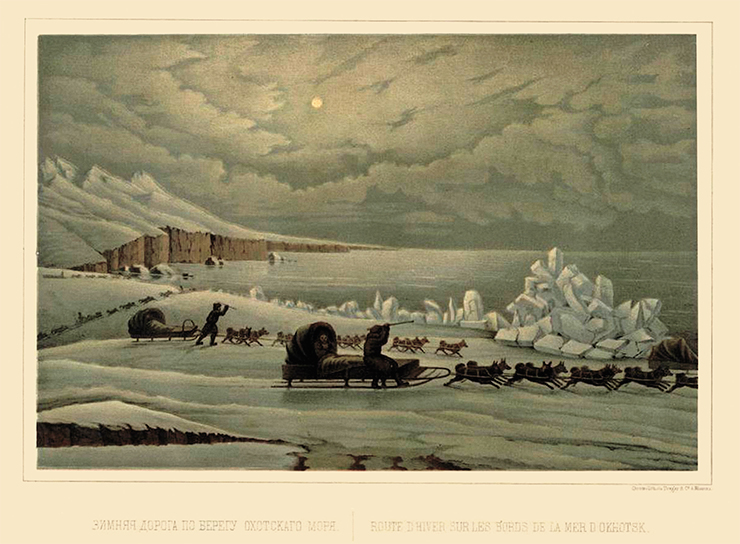
Academic literature has given a very general overview of Bolshoi Posad and its destruction. For example, I. S. Vdovin in his book on the ethnic history of the Koryaks (1973) summarized all the events of 1714 just in one sentence: “During one of the skirmishes of Kamchatka Cossacks supported by Alyutors, residents of the village of Kultushnoye, the ‘Bolshoi Alyutor fortress’ was completely destroyed.” Many authors refer to Bolshoi Posad as a “small fortress.”
This is what Atamanov and Lvov told about this settlement. The Alyutor Bolshoi Posad was built on the coast of a bay, on a high rocky mountain washed with waters on two sides (in that place, the mountain was 30 sazhens, or 60 meters high). On the third side, the approach to the fortress was blocked by a small bay with a river flowing into it (the mountain there was lower, about 20 sazhens but very steep) so one could only approach the fortress from mainland, along a gentle slope 10 sazhen high.
 Sled dogs were the only reliable means of winter transport on Kamchatka: in 1876, there were about 10,000 registered dogs there! Dog sleds were not as fast as reindeer sleds but did not require special care, and therefore, were valued highly. When breeding dogs, Koryaks preferred a kind word to a stick; coastal Koryaks used to build log huts for she-dogs and puppies. Apart from being draught animals, dogs were offered as sacrifice, helped to hunt, and their skins were used to make clothes
Sled dogs were the only reliable means of winter transport on Kamchatka: in 1876, there were about 10,000 registered dogs there! Dog sleds were not as fast as reindeer sleds but did not require special care, and therefore, were valued highly. When breeding dogs, Koryaks preferred a kind word to a stick; coastal Koryaks used to build log huts for she-dogs and puppies. Apart from being draught animals, dogs were offered as sacrifice, helped to hunt, and their skins were used to make clothes
The defense works of the fortress included, firstly, a four-cornered wall with the sides 50 sazhen long (according to Lvov) or 100 sazhen long (according to Atamanov). We believe that Lvov’s estimate is more correct as it is difficult to imagine that the area of the fortress exceeded 4.5 hectares; even with 50 sazhen long walls, its area was over 1 hectare. The wall consisted of the exterior and interior earth mounds covered with turf; the mounds were crowned with a fence made of two rows of poles, and space between them (71 centimeters) was filled with earth, pebbles and rocks. The wall was over 2 sazhens (4 meters) high. This was the lower fortress; on its corners, there were special “outlets” on the poles, from where one could shell the enemy who has come close to the walls.
Leading into the fortress through the mounds and walls with a total thickness of 2.5 sazhens were three serpentine gates (their shape was meant to prevent cannonballs from getting inside the fortification in case of direct fire). Behind the walls of the lower fortress, there was another one, a smaller fortress called the upper, which represented the second line of defense with 1 sazhen high walls lined with turf from the inside.
The walls of both lower and upper fortresses had loopholes hung with grass. Inside the fortress were 40 winter huts (these must have been traditional semi-pit-houses) in the form of squares with 4 to 10 (according to Atamanov, 7—8) sazhen long sides, as well as summer “treehouses” erected on high poles. Approaches to the summer shelters were blocked by a wall of boat hulls lined with turf. Since there were no forests with big trees near Bolshoi Posad, we can suppose that the poles were made of driftwood, which can come to this shore even from North America.
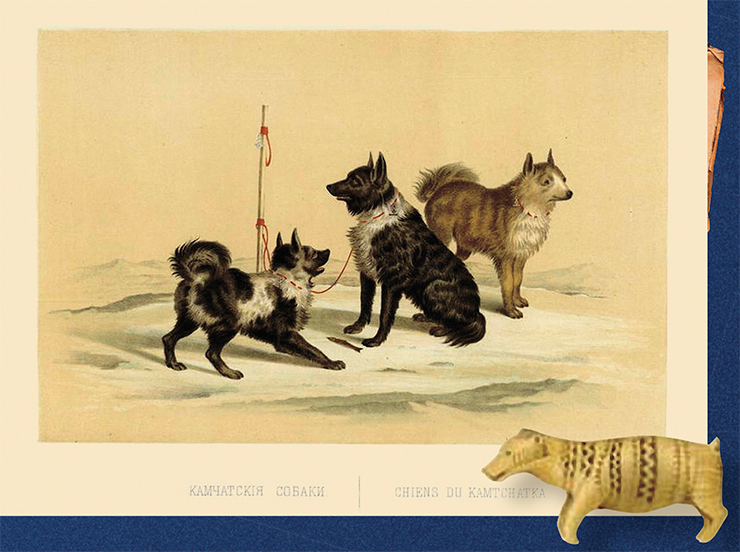
We can give only a rough estimate of the number of people living in the fortress. Atamanov reported, "There were about 1,500 men there fit to go to war, without women and children.” Lvov also estimated the male population at 1,500 people including 700 “good warriors” plus youngsters and peasants (young boys and old men did not count). If we use the accepted methods of estimating the total indigenous population, i. e. multiply by four the number of yasak payers or the number of warriors, we will see that the overall population of the fortress must have reached four to six thousand people.
At first sight, these numbers seem incredible. Historians estimated the Alyutor Koryaks’ population in the early 18th c. on the basis of the data obtained in the middle of that century, when the first synthesis reports on the number of yasak Alyutors emerged. According to B. O. Dolgikh (1960), in the late 17th – early 18th c. there were 1,025 Alyutors. I. S. Gurvich (1966) considered this number to be understated and not taking into account the Koryaks’ losses because of the military expeditions conducted by Anadyr service men. His estimate of the Alyutor population in the beginning of the century is 1,300 people. These researchers, however, did not see the data supplied to Müller by his informants. Moreover, let us not forget that Bolshoi Posad, though the largest, was not the only Alyutor settlement: in 1704, the Kamchatka governor V. Kolesov counted nine Alyutor fortresses.
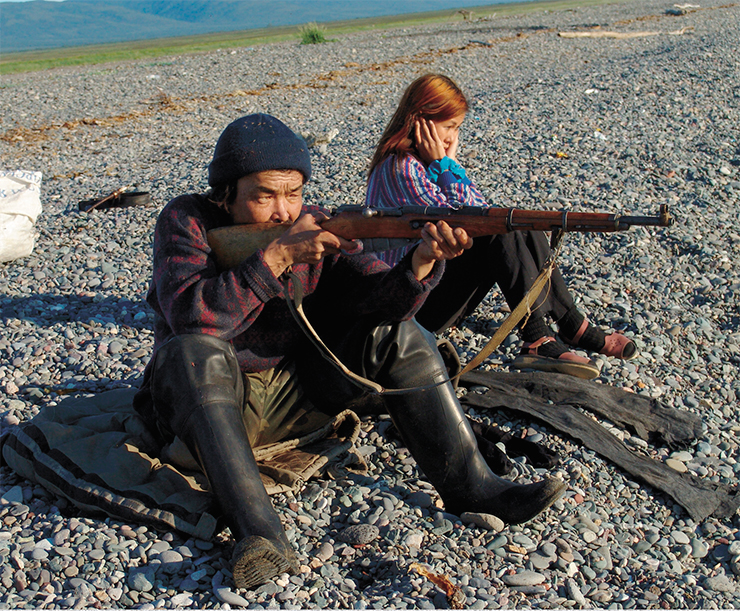
It is entirely possible the Müller’s informants overestimated the enemy headcount (which was general practice), but anyway Alyutor Bolshoi Posad was the largest aboriginal settlement in Siberia in the first half of the 18th c. In terms of the population, size and fortifications it could compete not only with the Russian fortresses and industrial settlements based in Siberia but also with towns, such as Narym, Nerchinsk, Selenginsk, Turukhansk, Pelym and Surgut. Contemporaries who had seen Bolshoi Posad before its destruction were undoubtedly impressed by its size and impregnability. It is noteworthy that the Russian service men did not call it a small town or a small fortress, which were typical names for aboriginal fortified settlements, but referred to it as “posad,” a word used to denote Russian urban settlements.
“Everything was set on fire and everybody was put to death”
Proving the fact that the capture of Bolshoi Posad was not a regular “skirmish” is its six-month siege by a large detachment of well-armed Anadyr service men, Yukaghirs and Koryaks, which had no precedent in the Siberian Cossacks’ military practice.
Having seen the fortifications of Bolshoi Posad, A. Petrov had to recognize that a rapid assault was out of the question. It was decided to starve the fortress into surrender: the Russians had every reason to believe that these strategies would bring success. The appearance of a huge detachment of service men and their allies came as a surprise for the defenders, who had not even had time to bring their main food, dry fish, from the coast – it went to Russians. Another blow was the acute shortage of fresh water and sometimes its full absence. Drawing on the previous experience of military action, the Alyutors were sure that the Russians would not resort to a prolonged siege and, having suffered a rebuff, would go home. This is why the settlement on the high cliff had no fresh water in store.
The hopes of Bolshoi Posad residents for support from their relations living in the nearby fortresses, who could fight behind the enemy’s lines, were in vain. When the residents of Bolshoi Posad saw the Russians approaching, they lit a code beacon, and the other fortresses along the coast followed their example. Having assessed the situation, the leaders of the expedition took stern measures by sending a large force to capture these fortresses. The largest of them, Kultushny (with a population of 600), surrendered peacefully, paid yasak for 120 people, returned 7 hostages and in the future helped the attackers as an auxiliary force. Most of the other small fortresses also paid yasak and returned hostages. Lvov adds, “Also, we burnt down two fortresses and killed the people.”
The main body of the attackers was based about 200 meters away from the fortress walls, beyond the reach of Koryaks’ firearms. To protect themselves against the defenders’ raids, eight small fortresses of wood and turf, surrounded by a picket fence interwoven with twigs, were built for the service men on guard and for shooting. Since, for a long time, there was no sign of Bolshoi Posad being ready to capitulate, the service men decided to set fire to the fortress wall. For this purpose, shields lined with deerskin and having loopholes were erected on 16 sleds, and yet another shield covered the cannon. Under the protection of the shields, the attackers began to make a roll out of the sheaves of dwarf Siberian pine interwoven with twigs. According to Atamanov, the roll was about 3 sazhens (6 meters) wide and up to 2 sazhens (4 meters) high. This roll was being moved to the wall under the protection of the shields, by rolling the sheaves over from the internal to the external side.
On April 20, when there was just about 7 sazhens left between the roll and the fortress wall, something unexpected happened: the defenders threw at the roll burning sacks with grass, gunpowder and seal fat. The roll caught fire, and the Koryaks started shooting from firearms. The service men retreated not without a price – in particular, the cannon man was killed. After that, starving the defenders out was the only hope, and the fortress was completely blocked from all sides.
The besieged were in dire straits, especially because of the absence of water. The raids carried out to get water were usually to no avail and entailed great losses. The situation of the besiegers was not easy either: they had almost run out of gunpowder and lead. The Koryaks were so much exhausted by starvation that sometimes they even ate the dead. At the end of the siege, there were deserters to the Russian camp almost every night – first only women and children, and then occasionally men.
When there were only about 300 men left in the settlement fit to carry arms, the deserters claimed that all the defenders were dead. Only then Petrov dared to give the order to attack but, as noted by Atamanov, “he acted so boldly that lost many men.” When, on August 6, the service men climbed up the fortress wall, they saw the small inner fortress, where the last Koryak warriors had retreated.
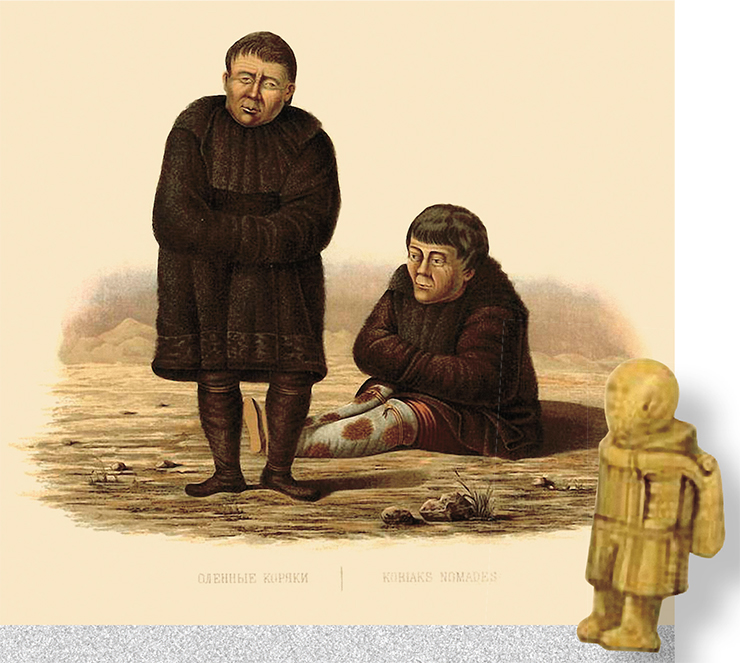
That fortress was pelted with hand grenades; as result, a gunpowder barrel exploded, which led to the major destruction of fortifications. Atamanov ends his story of the siege as follows, “At last, everything was set on fire and everybody was put to death. The deserters who had given false data were killed as well.” The spoils included a few dozen of harquebuses and muskets, dozens of pounds of gunpowder, lead and about 40 iron kuyaks (suits of brigandine armor).
“All the Russians were deprived of life almost simultaneously”
After Bolshoi Posad had been demolished, A. Petrov’s detachment moved to the Alyutora River, where boats going to Kamchatka were built and boats coming from Kamchatka docked. Here, a strong point of Russian power in the region was built, the Alyutor Archangelsk fortress. For its construction, they used osier as thick as an arm as there were no bigger trees nearby. Inside the fortress there were some living quarters – yurts covered with earth.
In late fall, a detachment of service men led by the governors Vasily Kolesov and Ivan Yeniseisky arrived at the fortress with the Kamchatka yasak coffers, which consisted of 6,710 sables, 761 foxes, 166 beavers, and other pelts and gold from a shipwrecked Japanese boat. The joint detachment of Petrov and Kamchatka governors’ service men accompanied by numerous allied Yukaghirs set out to the Anadyr fortress. The Alyutor Archangelsk fortress was left with a garrison 70 service men led by Atamanov and some reindeer Koryaks taken as hostages. Soon, a detachment led by the governor Vasily Petrilovsky, who had been sent from the Anadyr fortress to Kamchatka, came to the fortress.
The events that followed, later described by Atamanov, were tragic – this time, for the Russian service men. Sometime later, the Kamchatka governors going to the Anadyr fortress together with Petrov got separated because of food shortage and slow movement of the long baggage train and went ahead light, having left the yasak coffers in care of the detachment’s service men. Shortly after that, during a heavy snowstorm, the Yukaghirs, who considerably outnumbered the Russians, killed all the service men. Apparently, the sudden attack had been carefully planned: “The Yukaghirs distributed themselves between the sleds in such a way that all the Russians were deprived of life almost simultaneously. There were two Yukaghirs attacking each Russian on both sides.”
Atamanov presented the reasons for which the Yukaghirs made such an audacious move with respect to their yesterday’s allies. The most important reason, in his opinion, was unfair distribution of food, which brought the Yukaghirs to starvation. The food rations (fish and meat) stored during the stay in the Alyutor Archangelsk fortress and over 2,000 non-riding reindeer taken from the yasak reindeer Koryaks as living supplies should have sufficed for both Russians and Yukaghirs, had the service men of the Kamchatka governors not joined the detachment. Originally, the ration distribution seemed fair: all the participants of the expedition received an equal share: for instance, every Russian and Yukaghir was assigned a non-riding deer per week. For the service men, it was quite enough, but for the Yukaghirs accompanied by their wives and children it evidently was not: the food lasted two or three days and the rest of the week they had to starve.
The second reason given by Atamanov was vexation. During the expedition to Bolshoi Posad, every Yukaghir had reindeer and sleds to carry his family, yurt and supplies. On the way back, Petrov took all of their sleds with reindeer except one to carry the yurt and handed them over to the Kamchatka governors and to all service men, and also to carry the yasak coffers. Thus, the service men sledged while the starving Yukaghir families had to walk. Finally, the third reason was the news that came from Anadyrsk to the effect that the first smallpox epidemic in that region had killed all the Yukaghir hostages. Previously, the Yukaghirs’ submissiveness was attributed largely to the fact that the Russians held Yukahgir relatives as hostages.
The elimination of Petrov’s detachment triggered a large-scale uprising, which united Yukaghirs, yasak and “non-peaceful” Koryaks. From February 12 to May 20, they besieged the Alyutor fortress. The garrison managed to repulse the all the attempts to capture the fortification but the Russians suffered serious casualties: during one of the incursions they lost 20 service men, and another 30 were killed near the Pokacha River, where they had gone before the uprising began to seize reindeer from the local Koryaks. The Koryaks, following the examples set by Russians, tried to starve out the fortress defenders but the spring flood made them retreat. The besieged took advantage of the situation and managed to get to Kamchatka on the six boats left (the others had been burnt by the Koryaks), taking with them all the yasak collected, arms and munitions.
Alyutor Archangelsk fortress was burnt down by the rebels. Later, in autumn 1732, a new Alyutor fortress was built not far from it, in accordance with the decrees of the Senate and Supreme Privy Council of 1727 and on instructions from the commander of the Anadyr party, captain of the Tobolsk dragoon regiment D. I. Pavlutsky. The destiny of these defense works, however, according to Atamanov, “was even worse as many Russians lost their lives.” This time, the main part in the siege and destruction of the fortress, which occurred in 1733, was played by the Alyutor Koryaks. Another large-scale Koryak uprising followed, as it had happened in 1715.
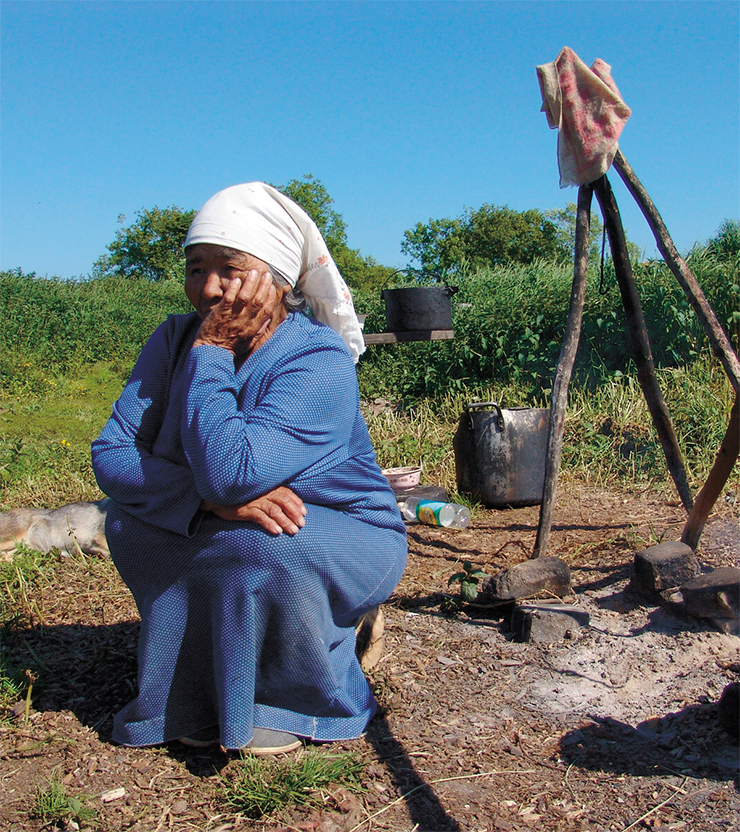
A remarkable detail: telling about the siege of the Alyutor Archangelsk fortress, Atamanov “forgets” to mention that he and his comrades not only fought against the “treacherous” Koryaks but also traded with them. The Koryaks had a good share of the yasak coffers the Yukaghirs captured when Petrov’s detachment was wiped out. Atamanov traded furs from these coffers for tobacco, both for himself and his men, and did not mind the public seals on many of the sables’ kips.
The event that took place in the early 18th c. on the Russian lands populated by the Koryaks had far-reaching consequences.
The punitive expeditions conducted by Anadyr service men against the Penzhina and Alyutor Koryaks and rebellious Yukaghirs decreased the indigenous population (and, respectively, the yasak collected) and its combat capacity. The forays by the Chukchi, who stole reindeer herds from the Koryaks and Yukaghirs and drove these peoples to the south and west, became more frequent; traditional ties between the various ethnic groups of the Koryaks and their neighbors were broken – this is only a partial list of the misfortunes that came upon the aborigines living in this region.
The Koryaks continued their fight for independence for several decades but the forces were too uneven. In the 1750s, the Koryak resistance was fully crushed.
* Syn boyarski is a Cossack rank. The Cossacks of this rank received payment comparable with that of regular service-men but enjoyed a higher status. From among them, the managers of yasak winter quarters and fortresses, yasak collectors and leaders of small detachments were generally chosen
References
Dolgikh B. O. Rodovoi i plemennoi sostav narodov Sibiri v XVII veke (Clannish and Tribal Compositions of Siberian Peoples in the 17th c.) // Proceedings of the N. N. Miklukho-Maklai Institute of Ethnography. New series. Moscow, 1960. V. 55. 623 p. [in Russian].
Elert A. Ch. Novyie materialy gj istorii russko-koriakskikh otnoshenii v pervoi chetverti XVIII v. (New Materials on the History of Russian-Koryak Relations in the First Quarter of the 18th c.) // Russkoye obshchestvo i kultura pozdnego feodalizma. Novosibirsk, 1996. P. 247–264. [in Russian].
Elert A. Ch. Ekspeditsionnyie materialy G.F. Millera kak istochnik po istorii Sibiri (G. F. Müller’s Expedition Materials as a Source on the History of Siberia). Novosibirsk, 1990. 246 p. [in Russian].
Gurvich I.S. Etnicheskaya istoriya narodov severo-vostoka Sibiri (Ethnic History of the Peoples of North-East Siberia) // Proceedings of the N.N. Miklukho-Maklai Institute of Ethnography. New series. Moscow, 1966. V. 89. 276 p. [in Russian].
Krasheninnikov S.P. Opisaniye zemli Kamchatki (Description of Kamchatka Land). Moscow; Leningrad, 1949. 841 p. [in Russian]
Pamiatniki Sibirskoi istorii (Monuments of Siberian History). St Petersburg, 1882. Book 1. 552 p. [in Russian].
Pamiatniki Sibirskoi istorii (Monuments of Siberian History). St Petersburg, 1882. Book 2. 541 p. [in Russian].
Vdovin I.S. Ocherki etnicheskoi istorii koruakov (Essays on the Koryaks’ Ethnic History). Leningrad, 1973. 303 p. [in Russian].
Zuev A.S. Prisoedineniye Chukotki k Sibiri (The Annexation of Chukotka to Russia (second half of the 17th –18th c.)). Novosibirsk, 2009. 443 p. [in Russian].
RGADA (Russian State Archive of Ancient Acts). Coll. 199. Portf. 365. P. 1. D. 2. [in Russian].
RGADA (Russian State Archive of Ancient Acts). Coll. 199. Portf. 507. P. 2. [in Russian].
The Archive of the Russian Academy of Sciences. St. Petersburg Branch. Coll. 21. L. 2. P. 1. D. 25. [in Russian].
The Archive of the Russian Academy of Sciences. St. Petersburg Branch. Coll. 21. L. 4. D. 30–34. [in Russian].
The publication includes illustrations from the book “Journey across East Siberia” by I. Bulychev (1856) and photographs taken by K.A. Sagalaev, Folklore of the Peoples of Siberia Section, Institute of Philology, SB RAS (Novosibirsk)


